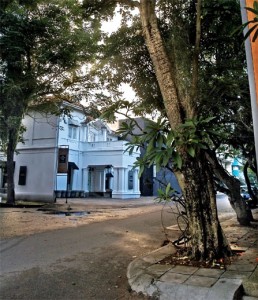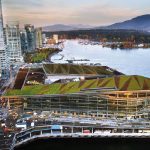-
Growing a City, the Asian Way
March 2008
Editorial
Cities are a part of our history; they reflect our likes and dislikes, our fashions and technologies, our wealth and poverty.
One of man’s greatest achievements on earth is undoubtedly the city, which is not a recent phenomenon but dates back many centuries. As a physical entity, each city possesses a distinct form which, though ceaselessly changing and evolving, is the very proof of its existence. The city is not only an indicator of the state of civilisation, but also living evidence of its growth over time.
 Today, especially in Asia, the once humane cities are changing at an unprecedented pace albeit in the name of development and growth. If not channeled positively, this pace may ultimately make our cities into junk yard for debris, and the once beautiful image of the city reduced to a mere memory.
Today, especially in Asia, the once humane cities are changing at an unprecedented pace albeit in the name of development and growth. If not channeled positively, this pace may ultimately make our cities into junk yard for debris, and the once beautiful image of the city reduced to a mere memory.
Not surprisingly then, for many of us, our view of Asian cities is a limited one, with poverty, congestion, exploitation, and perhaps, even centuries of deprivation. What is most appalling though is that despite these uncelebrated characteristics, the city dwellers as human and social entities in this part of the world are largely intact. This partially stems from the predominantly eastern way of life, which give high priority to emotional and social contact. This is a factor of crucial importance for our future development.
“If we look at all the fashionable concerns of environmentalists today: balanced ecosystem, recycling of waste, appropriate lifestyles, indigenous technology, we find that people of the third world already have it all. Ironically that’s the wonderful thing about the third world, there is no shortage of housing; what there is a shortage of most definitely is the urban context in which these marvelously intuitive solutions are viable.” Correa C (1985)
Asia, especially South Asia, is a world full of resources and animated skills. What is needed is to channel these resources meaningfully, to enhance the quality of life of the urban inhabitant.
Does growing vertically offer the best solution for housing? How apt is this in terms of traditional interpretations for Asian living? How viable are open spaces and pocket parks as social elements, to let the steam out in towns that are synonymous with congestion? Should we initiate mega projects to infuse contagious ‘city life’ into potential regional nodes? These are a fraction of issues that need to be addressed to enlighten urban life and give development its proper depth and meaning.
This issue of The Architect explores ways of facilitating growth of a city in Asia, particularly in Sri Lanka, which has cities fast becoming urban metropolises in their own right.
ZeenaMarikkar











